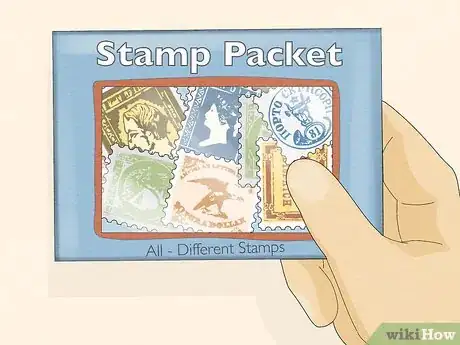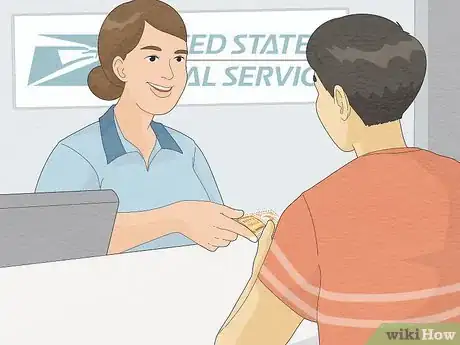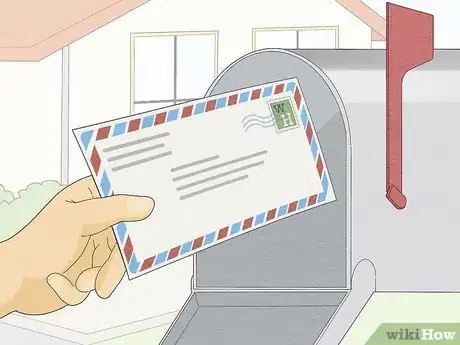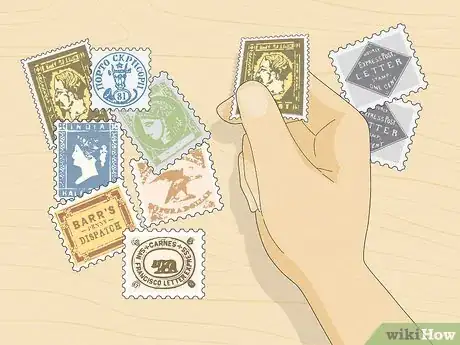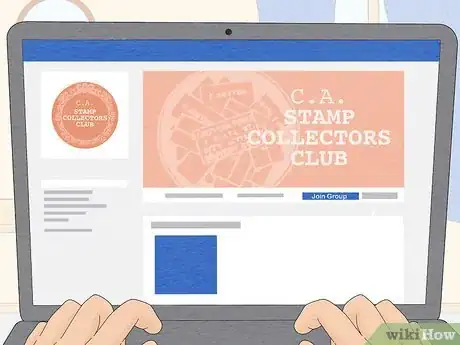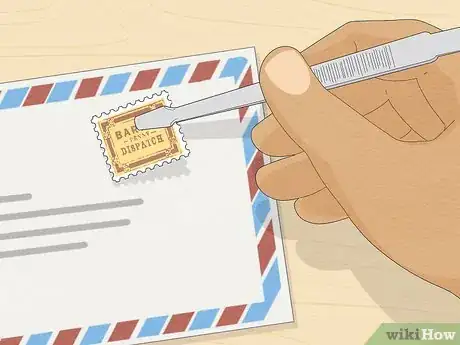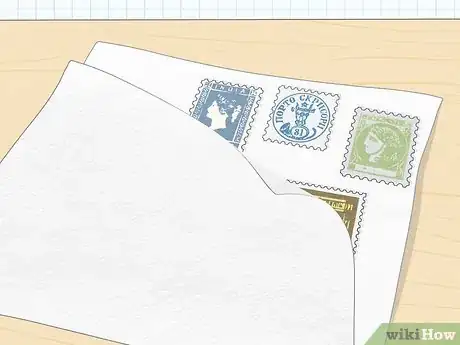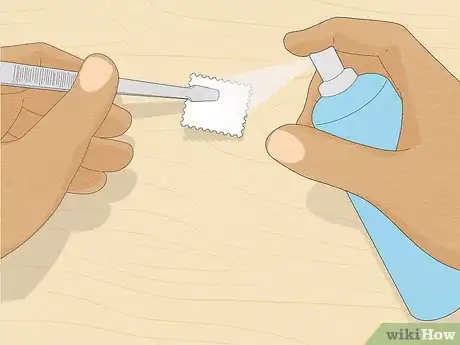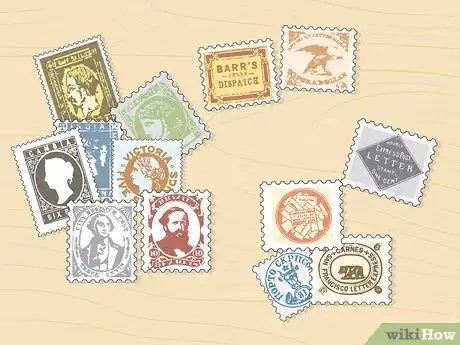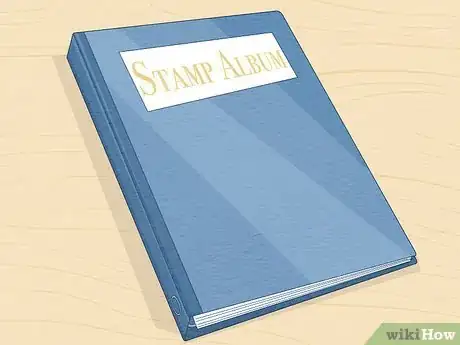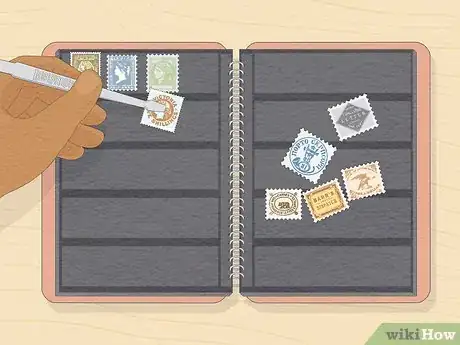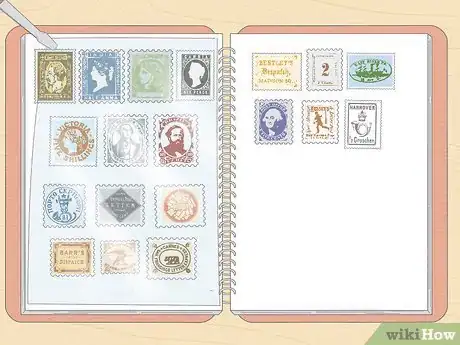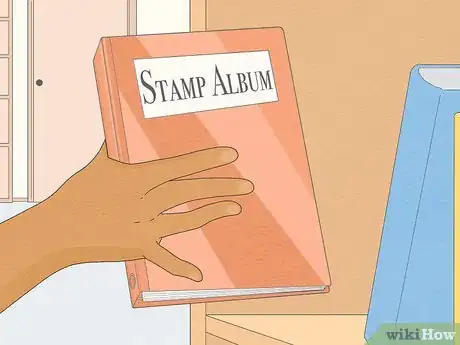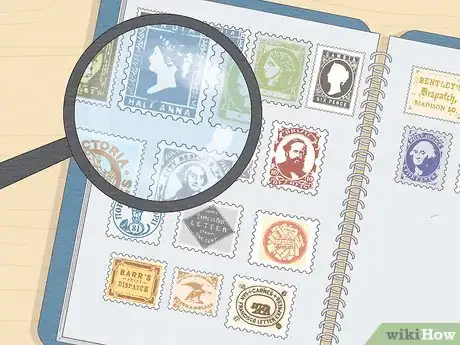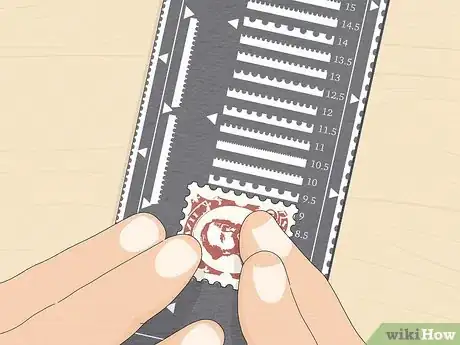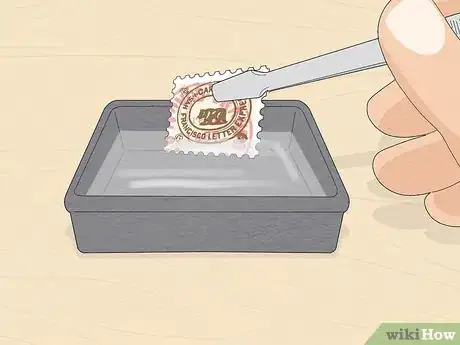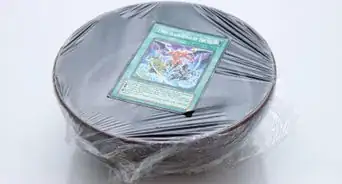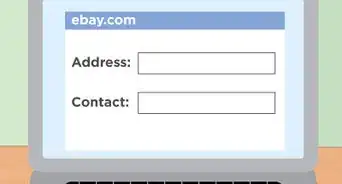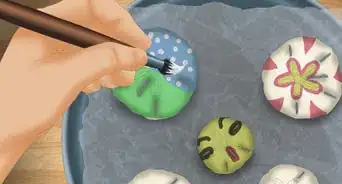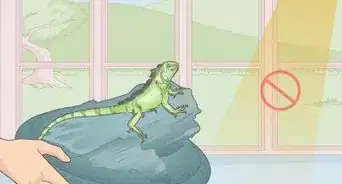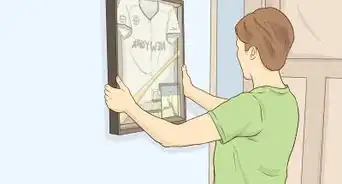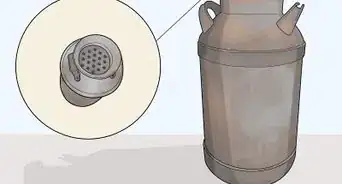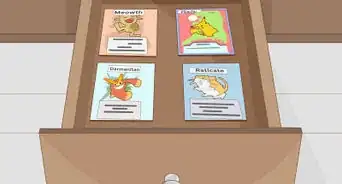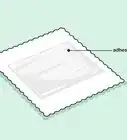wikiHow is a “wiki,” similar to Wikipedia, which means that many of our articles are co-written by multiple authors. To create this article, 31 people, some anonymous, worked to edit and improve it over time.
wikiHow marks an article as reader-approved once it receives enough positive feedback. In this case, 87% of readers who voted found the article helpful, earning it our reader-approved status.
This article has been viewed 180,066 times.
Learn more...
Collecting stamps can be a rewarding hobby at any level of skill or expense. A beginner or child can be perfect with an album of pretty pictures. An advanced collector can be enthralled with a detailed study of a single stamp, or by the challenge of tracking down the last stamp to complete a themed collection. The right way to collect is the way that makes you happy.
Steps
Collecting Stamps
-
1Start your collection with stamp packets. Stamp dealers and hobby stores offer affordable packets containing hundreds of used stamps. These are excellent for kicking off a new stamp collection. Make sure the packet is "all-different" so you get a wide variety of stamps, not multiples of the same stamp.
-
2Buy new stamps from the post office. You can buy unused commemorative stamps from any post office, often with appealing designs aimed at collectors. Some collectors prefer these new, "mint condition" stamps due to the higher quality, while others enjoy reading the cancellation ink mark the post office puts over stamps used in the mail. You can specialize in one type or the other if you like, but it's fine to keep both types in your collection.Advertisement
-
3Ask local businesses and friends to save stamps for you. Businesses often receive a lot of mail, and may receive mail internationally if they work with other businesses or international clientele. Friends and family might also be willing to save stamps from letters they receive, and pass them on to you.
-
4Get a pen pal. If you enjoy writing and receiving letters, find a pen pal so you can have an ongoing conversation. Pen pal websites online might help you find someone in another country, who might use stamps you wouldn't normally find.
-
5Swap stamps. Once you have sorted through a few packets of stamps, you might have a pile of duplicates, or stamps that don't interest you. You can trade these stamps with other collectors for their own duplicates, expanding your collection. If you do not have any friends or coworkers who collect stamps, ask employees and customers at the local hobby shop or stamp dealer if they're interested in trading.
- At the early stage of the hobby, it is best to trade one stamp for one stamp, instead of trying to learn the market value. One exception is stamps that are torn, damaged, or covered by a heavy cancellation (post office ink), which is typically worth less than a stamp in good condition.
-
6Join a stamp collector's club. Seasoned stamp collectors often meet to share tips and trade stamps.
- If you want to meet more dedicated hobbyists, you can find a stamp show instead, where people compete for prizes with their stamp collections.
Removing Paper from Used Stamps
-
1Handle stamps with stamp tongs. Find stamp tongs online or at a hobby store, and use them instead of your fingers, to avoid causing damage from oils or moisture. These are often called tweezers because they so resemble them, but are weaker and smoother to avoid damaging the stamp. Thin, rounded tips make it easy to slide underneath a stamp, while sharp points should be avoided due to the possibility of tears.
-
2Cut off most of the envelope. Used stamps are typically removed from the envelope before storing. If you like collecting the cancellation marks, or the post office ink mark over the stamp, cut out a rectangle of paper around the mark and skip ahead to the storage step in this section. Otherwise, cut a small square around the stamp itself. You don't have to be precise, since the steps below will remove the remaining scrap of paper.
- Because the cancellation mark takes up a lot of space in your collection, most collectors only save the most interesting ones.
-
3Soak most stamps in lukewarm water. This traditional method works on U.S. stamps from before 2004, and most stamps from other countries. Put the paper-backed stamps in a bowl of lukewarm water, with the stamp face up. Use enough room for each one to float to the surface. After 15–20 minutes, once the stamps have begun to separate from the paper, use your stamp tongs to transfer the stamps to a dry paper towel.[1] Handling the wet stamp very gently, scrape off the remaining paper. If the paper does not come off, let the stamp soak longer. Do not try to peel off the stamp.
- Stamps on brightly colored paper or with purple ink marks should be soaked in separate bowls, since the ink on the paper might bleed and dye the stamps.
-
4Rinse and dry the stamps. Once the paper is removed, rinse the back of the stamp in fresh water to remove the last of the gummy residue. Let the stamps dry overnight on a paper towel. If the stamps curl, you can place them between paper towels and sandwich them in between heavy books.
-
5Remove self-adhesive stamps with air freshener. Self-adhesive stamps, including all U.S. stamps since 2004, cannot be removed from paper using the traditional warm water method. Instead, find a non-aerosol, 100% natural, citrus-based air freshener, such as Pure Citrus or ZEP. Spray a small amount onto the paper attached to stamps, so the paper is soaked and translucent. Turn the stamp face up, roll the paper corner slightly, and slowly peel off the stamp. To remove the sticky back, dip your finger in talcum powder and wipe the back of stamp lightly.[2]
Storing and Organizing Your Collection
-
1Sort your collection. After some time spent on the hobby, most stamp collectors decide to narrow in on a particular subcategory of stamps. Even if you decide to collect a much broader selection, choose a theme to help sort your collection. Here are some options to choose from:
- Country — This is probably the most common way to sort a collection. Some people try to collect at least one stamp from each country in the world.
- Topical collecting / Thematic collecting — Pick a stamp design that means something to you, or just one you find pretty or interesting. Butterflies, sports, famous people, and airplanes are just a few common stamp subjects.
- Color or shape — Sorting by color can make an attractive collection. For a challenge, try to track down stamps in unusual shapes, such as triangles.
-
2Purchase a stamp album. Stamp albums, or "stock books," protect your stamps from damage and keep them in visible, sorted rows and pages. Some of them come with printed images of stamps from a particular country or year, so you can place your stamps over the images as you collect them.[3]
- Some albums are bound, while others are binders that can have new pages inserted. Black backgrounds tend to display the stamps more clearly.
-
3Mount your stamps. In some albums, you can store stamps by sliding them into plastic pockets. On others, you'll need to use a specialized adhesive that won't harm your stamps. Choose between these two options:
- "Hinges" are small, folded pieces of paper or plastic. To use one, moisten the short end, stick it to the stamp back, then moisten the long end and attach to the stamp album. These are not recommended for valuable stamps.
- "Mounts" are plastic sleeves, which are more expensive but better for your stamps. Fit the stamp into the sleeve, moisten the back of the sleeve, and stick it to the album.
-
4Separate pages with plastic sheets. If your album pages have stamp storage space on both sides, use plastic sheets to prevent them rubbing into each other or tearing. Mylar, polyethylene or polypropylene are examples of effective protective plastics, but you may be able to find others.
- Avoid vinyl sheets, which cannot effectively protect materials long-term.
-
5Store your album safely. Humidity, bright light, and temperature fluctuations can ruin your stamp collection, so keep it out of hot attics or damp basements. Don't store your collection near exterior doors or concrete walls, as these may introduce moisture. If you are storing your collection near the floor, place it in a box first.
Identifying Rare Stamps
-
1Refer to stamp collector books. Stamp catalogs and price guides are excellent resources, having illustrated lists of stamps, arranged by year, that give a current market value for a given stamp issue. The most widely recognized catalogs are: the Scott Postage Stamp Catalog, Stanley Gibbons for Great Britain issues, Yvert et Tellier for French issues, Unitrade for Canadian issues, and Minkus and Harris US/BNA for United States issues.
- You can often find these books in a large library, if you don't want to purchase them yourself.
-
2Examine stamps with a magnifying glass. With the designs of many stamp issues only differing by a line or a dot, magnifying glasses are probably the stamp collector's most valued tool. Small jeweler's loops are effective for most hobbyists, but extra valuable or difficult to identify stamps could call for a high-powered magnifying glass with a built-in colored light source.[4]
-
3Use a perforation gauge. This tool measures the size of the perforated holes around the edge of the stamp, and is only necessary for advanced stamp collectors. These gauges tell you how many perforations fit in 2 centimeters (0.79 inches), which can greatly affect the price of a valuable stamp.[5]
- If a stamp guide lists two numbers, such as "Perf 11 x 12," the first number refers to the horizontal perforation and the second number refers to the vertical.
-
4Identify watermarks. The paper used to print stamps sometimes has a watermark, often too faint to identify by holding it up to the light. If you have a stamp that can only be identified with a watermark, you'll need a special watermark detection fluid that is non-toxic and safe for stamps.[6] Place the stamp on a black tray and drip the fluid onto it to reveal the watermark.
- This is also a good way to find creases and hidden repairs on a stamp.[7]
- If you don't want to get your stamps wet, purchase a specialized tool for this purpose, such as a Sinoscope or Roll-a-Tector.
Community Q&A
-
QuestionCan I buy stamps from the post office?
 Community AnswerYes, you can.
Community AnswerYes, you can. -
QuestionHow do I make my own stamp book?
 Community AnswerYou can collect a few sheets of A4 paper and carefully begin filling the page, then carefully turn over the sheet and begin filling again. Once you've filled it with all the stamps you've got, put all the hole-punched sheets into a binder.
Community AnswerYou can collect a few sheets of A4 paper and carefully begin filling the page, then carefully turn over the sheet and begin filling again. Once you've filled it with all the stamps you've got, put all the hole-punched sheets into a binder. -
QuestionHow do I collect brand new stamps?
 hassan mohammad AlaminCommunity AnswerYou can get them from a local stamp store or post office.
hassan mohammad AlaminCommunity AnswerYou can get them from a local stamp store or post office.
Warnings
- For many, stamp collecting is a competitive lifestyle. Because of this, you must always acknowledge the possibility that the person with whom you are trading may be trying to scam you.⧼thumbs_response⧽
References
- ↑ https://postalmuseum.si.edu/introduction-to-stamp-collecting
- ↑ https://classic.stamps.org/userfiles/file/education/Removing_selfadhesive_stamps.pdf
- ↑ http://www.stamp-collecting-resource.com/stamp-collecting-supplies.html
- ↑ http://www.stamp-collecting-resource.com/postage-stamp-collecting-supplies.html
- ↑ http://www.kenmorestamp.com/perforation-gauge-cms
- ↑ https://postalmuseum.si.edu/tools-of-the-hobby
- ↑ http://www.stamp-collecting-resource.com/postage-stamp-collecting-supplies.html
About This Article
To collect stamps, start by buying affordable stamp packets from dealers and hobby stores to jump-start your new collection. Next, buy commemorative and other collectible stamps from the post office and add those to your collection. You can also join a stamp collector's club to socialize and trade with other collectors. Then, sort your stamps into categories and store them in a dedicated stamp album with protective plastic sheeting between the pages. For tips on where to safely store your stamp album, read on!
